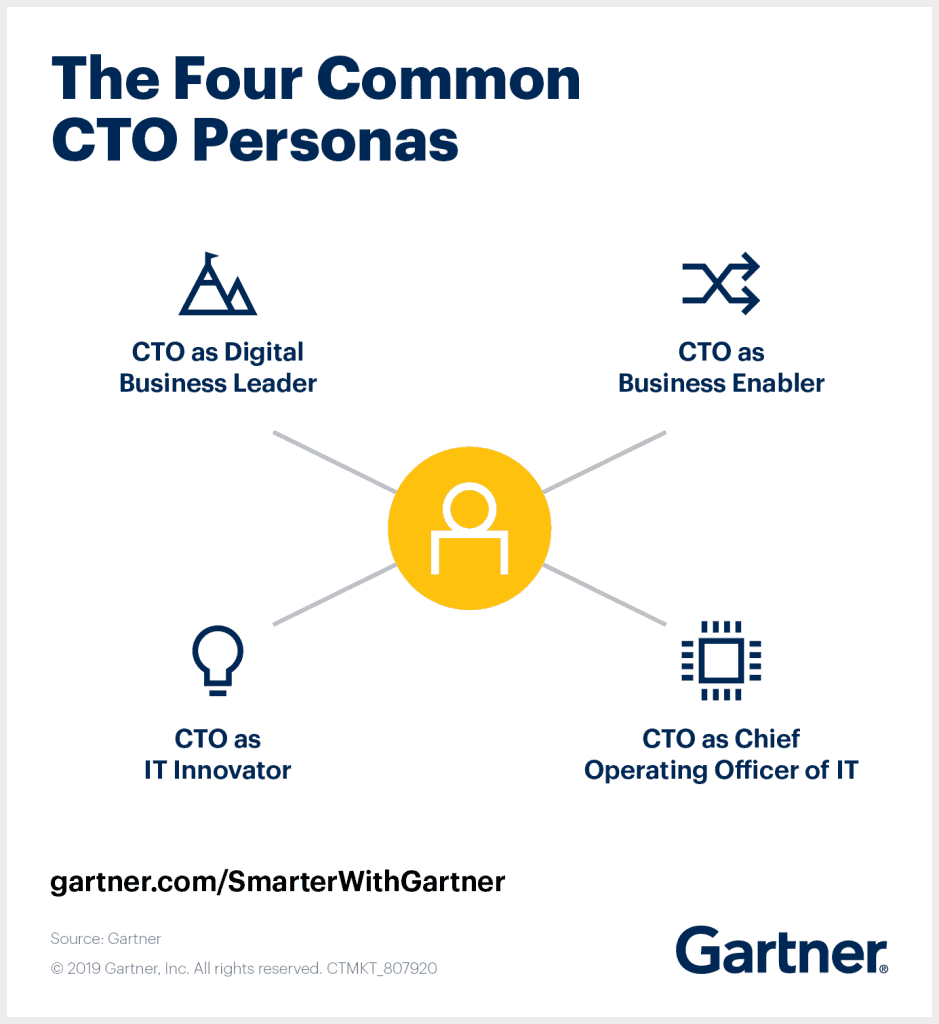Digital business transformation means that companies are increasingly becoming technology companies. Consequently, technology is now viewed as a strategic asset that can be leveraged to transform business models. We are seeing organizations increasingly appointing CTOs to be accountable for the enterprise technology strategy, with a laser focus on investing in emerging technologies that will deliver competitive advantage.
Defining the CTO role and ensuring that it is aligned with business priorities has become increasingly important in today’s era of digital transformation. Since organizations are at different stages of their digital business journey, the focus of the CTO varies, as discussed in my previous blog post (The Evolving Role of the Chief Technology Officer).
The role is often tasked with pursuing multiple, high-level goals such as “driving innovation,” “identifying emerging technologies” or simply “managing IT operations”, as well as a broad range of responsibilities. Success and progress in these areas can be difficult to quantify, making it hard for CTOs to succeed at their role.
At Gartner, we have identified four CTO personas in end-user organizations. Their aim is to help CTOs, and the organizations they work for, shape their role to focus on the needs of the organization. Often we find that the situation is not as black and white as focusing 100% on digital optimization or transformation. The reality is that the CTO will need to divide her or his time between optimizing IT or business operations, as well as driving new digital initiatives. These four CTO personas are shown in the figure and described below.

The Four CTO Personas in End-User Organizations
The CTO as digital business leader
Typically, a peer to the CIO, the digital business leader focuses on leveraging innovative technologies to transform an organization’s business model, products and services. CTOs in this role must have a deep understanding of technology trends and insight into how other organizations are leveraging these technologies to innovate. Knowledge of how these technologies could potentially be applied within their organization.
The approach of this CTO is often to “push” technology toward the main business functions. Responsible for creating the company’s digital business strategies, this CTO becomes the leader of the teams that will architect the required digital platforms. Partnering with CIOs is also important. In this way, both CTOs and CIOs can work together with business executives to identify, rationalize, and roadmap new business models and capabilities
The CTO as business enabler
In industries where technology is the company’s product (or a key part of it), the CTO is often the person in charge of that technology. The business enabler ensures that the technology is operating as intended and evolving in lockstep with the business. This CTO persona includes CTOs who are in charge of operational technology and lead a team of product engineers.
Ensuring that business and customer needs are met is a high priority. A coordinated, responsive IT delivery mechanism with focused leadership and chain of command is essential. This role is often a complement to the CIO. Where the CIO is focused on running the IT organization, the CTO is working across business and IT to govern and guide technology decisions.
The CTO as IT innovator
As a technology visionary and change agent for IT, the IT innovator provides leadership to enterprise architects, innovation managers, technology specialists and other professionals in shared IT services. Sometimes this persona is also the head of architecture, guiding the impact of IT innovations. These CTOs usually hold an executive position within IT and report to the CIO. They evolve the technology strategy to incorporate both infrastructure modernization and leveraging emerging technologies to transform IT operations.
The CTO as chief operating officer of IT
In very large organizations with significant IT headcount, this CTO is focused on the day-to-day running of IT. Their responsibilities typicall include running and maintaining IT operations through IT service management, vendor management, shared IT services, data center, telecommunications and security.
This frees the CIO to work at a more strategic level across the business. The primary goal of the chief operating officer of IT is to meet agreed-upon delivery of IT services in support of the existing business model. These CTOs are heavily involved in IT purchasing and procurement decisions for both technologies and services.
Regardless of their persona, the most important take-away is that CTOs and their organizations agree on what the role means in its unique context. Through this shared understanding, the CTO can work closely with business leaders to drive digital transformation efforts and meet business goals.
Gartner clients can read more in our Gartner research report “Demystifying the Many Personas of the CTO”.
First published on Gartner Blog Network





